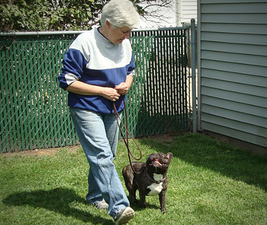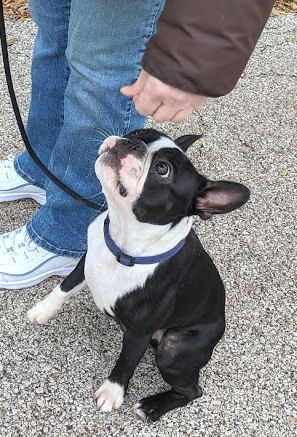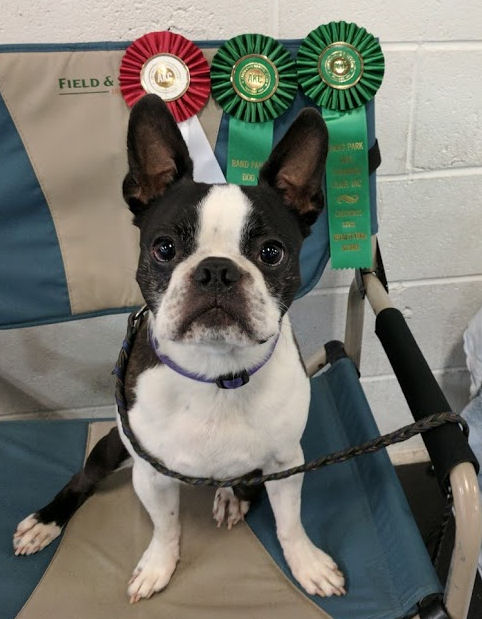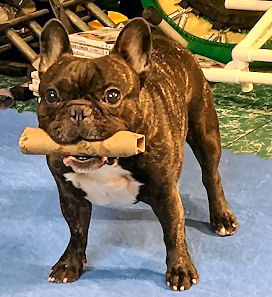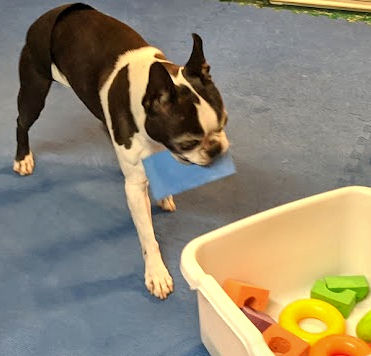Looky-Loo is a dog training game that reminds your dog that the two of you are a team, doing things together. It lets dogs be dogs – investigating their surroundings, being aware of the world around them. While always maintaining a “check in” mentality. The fun continues as long as your dog remembers to “check in” with you.
This applies whether you’re out for a meandering walk around the neighborhood or running a competition agility course. The invisible connection between you and your dog is an important part of your relationship. In unfamiliar circumstances, or if your dog’s unsure, your demeanor when your dog checks in will help determine how interactions proceed.
Next step in Looky-Loo
In the first phase of Looky-Loo you held a toy or other object behind your back, showed it to your dog briefly while saying “Look!”, and then hide it again. When your dog looked at your face, rather than for the toy, you clicked and rewarded. After just a few sessions, your dog should realize the object of the game is to focus on you.
The next step is to keep the toy visible. Only say “Look!” once when you first show it. If it’s a particularly desirable toy, it may take a while until your dog remembers to focus on you. As soon as they do, click and reward. The reward can be a treat or even a game of tug with the “Look!” toy. Focusing on you has to be the most rewarding part of the game. The click-and-treat comes when the dog looks at you, not at the object.
Timing is important
The click-and-treat comes when the dog looks at you. That’s the goal of “Looky-Loo.” Getting your dog to return his/her gaze to you after something distracting happens. (See last week’s tip: Looky-Loo Part 1.) It’s not the end of the world if your timing is off sometimes. It happens to everyone. When it does, and it will, give your dog an “Oops! Cookie” and reset the game. Just keep the goal in mind and watch your dog’s eyes.
Dogs learn through the timing and placement of rewards. Some people, playing attention games, even start holding the treat by their noses to bring their dog’s focus up to their eyes. That lures the dog to look at their face, rather than rewarding the dog’s decision to watch. “Watch me!” is a phrase you might hear a lot in dog training classes. It works sometimes. It doesn’t teach the dog that watching is more interesting than that speck on the floor.
Upping the game
The next step, before you take “Looky-Loo” out on the road, is to get your dog to look at distractions in the environment and still choose to look at you. Rather than holding the object, it will be on the floor where you’ll be passing by it.
It’s time to move the game someplace where you have space to move a few steps and place a distracting object to the side. Place an object that isn’t very interesting to your dog on the floor. Holding the dog’s leash, try to walk by the object, saying “Look!” Keep walking, and when your dog’s focus is on you, click and reward. If the dog’s attention stays on the object, go back to the last step, using the same object. Your dog will let you know when they’re ready to move on, or if it’s not quite time.
Fran and Simon have a variation of Looky-Loo:
Moving on
Remember, there’s no timetable for dog training games. Dogs learn at their own pace. And some games go more slowly than others. If your dog is extremely curious, this may be a tough one for them.
The next steps would be to change the object used as a distraction. We started our Looky-Loo dog training game with something that the dog didn’t really care about. Make the distraction more desirable in gradual steps. Work your way up to things that your dog loves. Can your dog still “Look!” and come back to you? What if it was a favorite toy? Or a bowl of food?
Taking it to the streets
When your dog is fairly proficient at “Look!” and focus, it’s time to move the game to places you may actually need it. When you do, start the game with a quick reminder of where the game began – hide an object behind your back, show it briefly while saying “Look!” and hide it again. Just a quick refresher helps the dog know what game you’re playing.
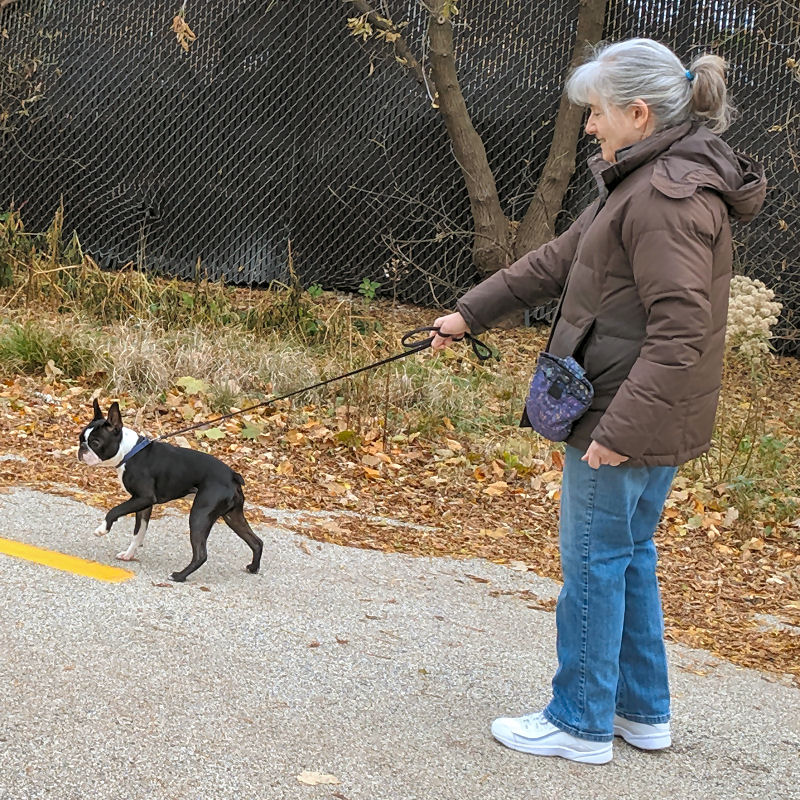
When you’re out and about, you can make anything the subject of “Looky-Lou!” Just tell your dog to “Look!,” whether it’s a squirrel, a person walking, or a dog being walked in the distance. When your dog looks back at you, click and reward.
Be ready
Your dog is learning to gauge their reaction to “stuff” by your response. Stay calm, tell your dog to “Look!” and wait for them to pay attention to you. Be sure you’re watching your dog’s face so you can tell the exact moment their focus is on you. Be more excited by your dog watching you! That’s the tremendous accomplishment – celebrate it with enthusiasm!

